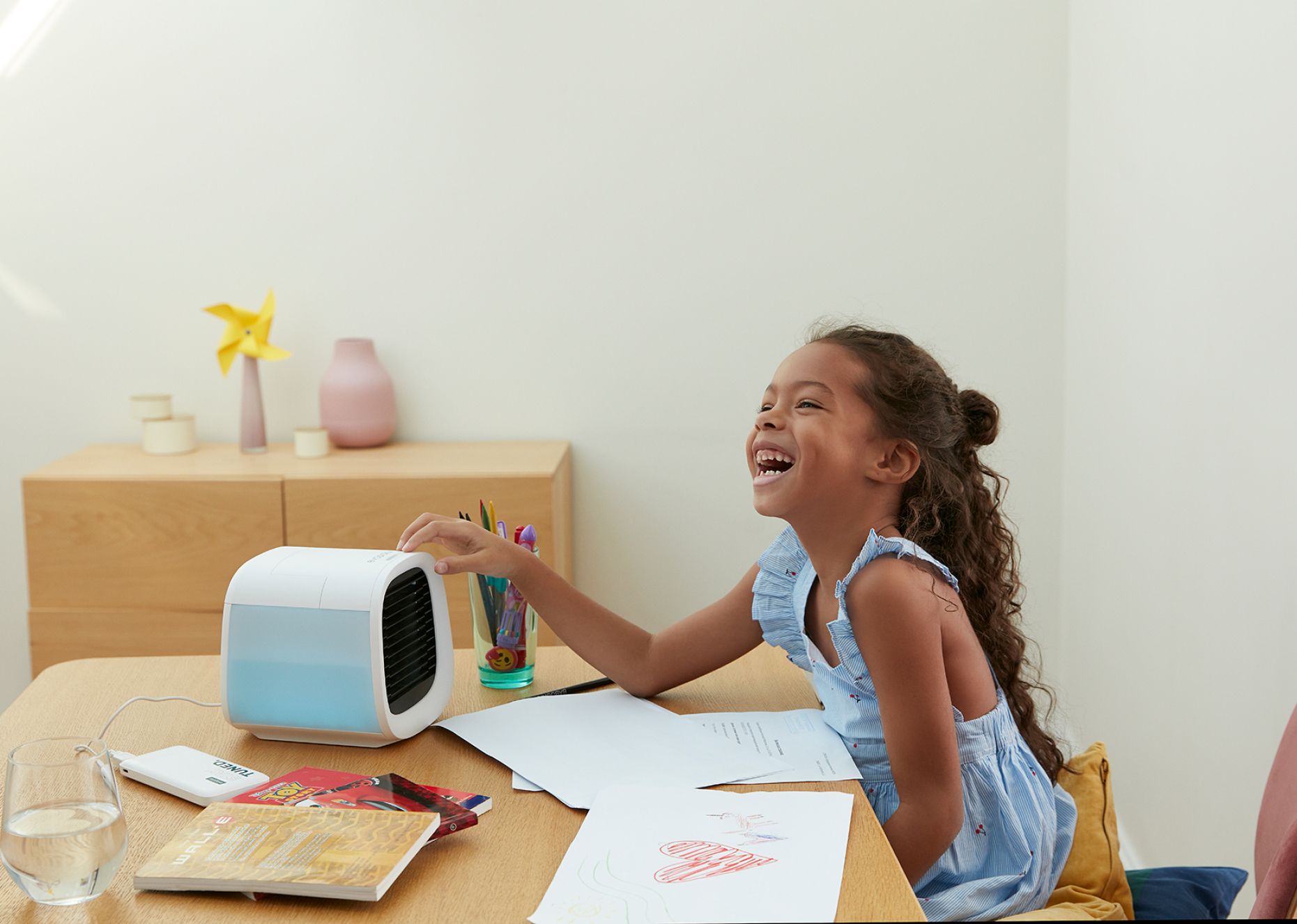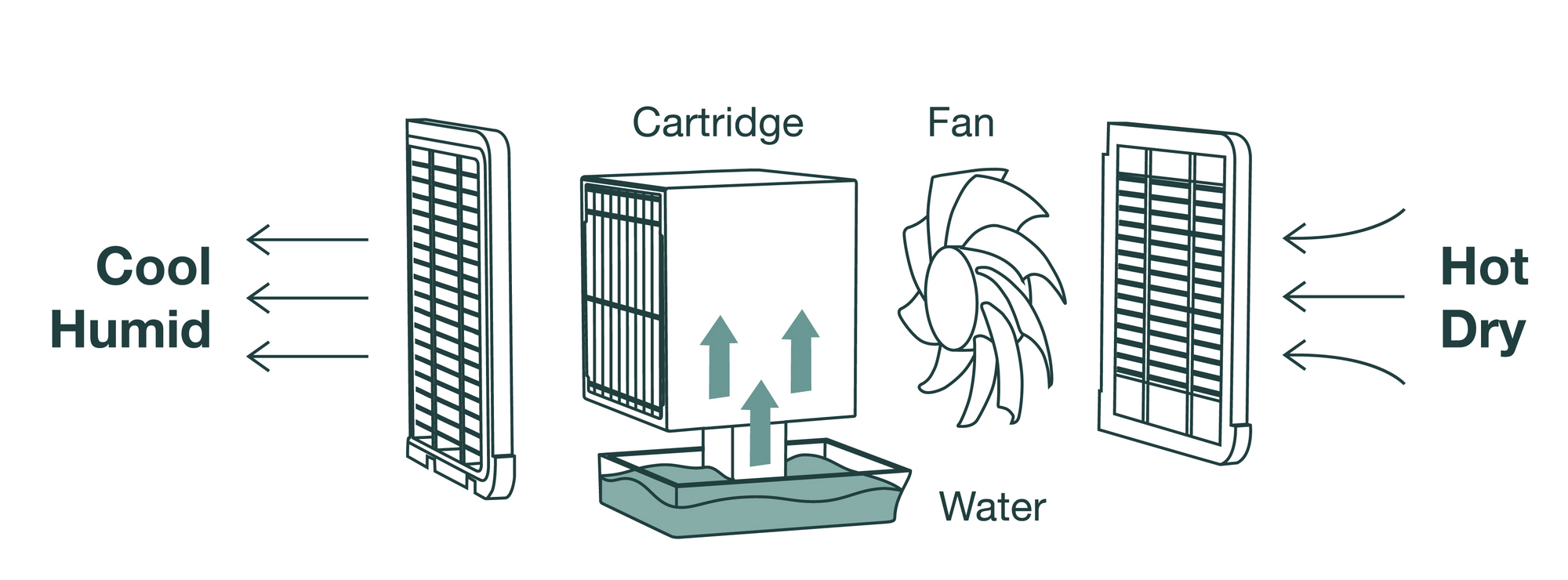The water-cooled or chiller boiler system is the most popular and cost-effective unit for condominiums and apartment buildings. This kind of HVAC system puts together the chiller, boiler, pumps, and controls in a single package to ease installation and maintenance. A water-cooled system is designed with a cooling tower instead of each unit having its own heat pump. Water Cooler Air Conditioning is mainly used in condominiums, office buildings, and industrial facilities.

Best portable cooling devices
What Are Water-Cooled Air Conditioners?
Water cooled air conditioner Water-cooled air conditioner can be referred to as a water-cooled condenser because it is responsible for removing heat which the refrigerant absorbs while flowing through the evaporator. In the condenser, water flows in an opposite direction and cools down hot air refrigerant (180°F or 82°C) from the compressor.
The water may be used in a system of waste water where it goes to the drain after use. The waste water system is not recommended because it leads to wastage; some states do not allow this practice to take place. However, the best solution could be recycling of water by means of a cooling tower albeit more expensive. The heated water will be forced out using either forced draft or natural draft from the cooling tower.
How Water-Cooled Air Conditioners Work?
Chilled water is better than air for its ability to circulate through spaces as small as those through which one-inch pipes can pass. The water coil equipped with the air handler cools the space whereas the heat is absorbed from the air and pumped outside for its removal. These Air Conditioning System Maintenance systems are called “water-cooled” but they are sometimes referred to as “AIR Cooled” A/C systems since their chillers are cooled by moving air. Once a roof-mounted chiller or cooling tower reduces water temperature by about 10 degrees, it is then returned to distribution lines as chilled water. One of the biggest advantages to having a water-cooled AC system over a conventional residential HVAC system is that it will not freeze up and also it runs very efficiently. There is a diagram on how the cooler connects with the Fan, Air filter, and Water pump.

Different Types of Water Cooled Air Conditioners
Lowering condensing temperatures of air-cooled air conditioners leads to better performance than water-cooled ones. Its specific heat capacity makes it more efficient when compared with air. It is usually used for a capacity above 20 tons.
You hardly see this system in private residences because of the high cost of equipment, more maintenance, and high installation costs. As a result, it is used more often in residential buildings, small factories, and price-sensitive stores. Water-Cooled Air Conditioner Condensers – The Main Types:
Tube-In-a-Tube Shell
This configuration involves inserting an inner tube into the outer one that is larger and shaping both pipes into a coil pattern to save space. This is the most commonly used design as it is easy to manufacture.
Water will be sent through the inner tube while the refrigerant flows in the outer tube. The air within also cools down the refrigerant. There can be an internal grooved tube to enhance the heat transfer between these fluids.
Importantly, water and refrigerant are designed to flow in opposite directions – counterflow arrangement ensures equal temperature differences between them along the entire length of heat exchange.
The tube is coiled to serve as a condenser, making it impossible to clean the inside mechanically with a brush because of water mineral deposits. The only solution to these deposits is using appropriate chemicals that would break minerals into compounds and flush them out.
Shell and Coil
This type of condenser contains a shell within which there is a coiled tube made from copper. In the shell, hot gas refrigerant is cooled by water flowing through the coil. Hot air enters the condenser at the top of the shell and is condensed while descending and contacting the coil. Below in the shell, this gas further condenses into a subcooling condition.
Since the inside of this coil is in the shell, it cannot be cleaned mechanically with a brush when it becomes covered with minerals from water. Chemicals are therefore used to rinse off minerals.
Shell and Tube
This sort of condenser has steel shells inside which lie many copper tubes. It is only used for large-scale air conditioning systems since its production cost is relatively high.
The water flows through the tubes to reach the refrigerant that goes into the shell from its top. The shell acts as a receiver. And then, in the condenser, the subcooled liquid refrigerant is drained off for use at subsequent steps of cooling. Mineral deposits can be eliminated by removing the tubes from the shell and cleaning them.

When to Use a Water-Based Air Conditioner
Certainly, an air-conditioning system based on water is perfect for locations where air-cooled systems are less efficient or unfeasible. It is suitable for climates with high external temperatures and low humidity since it remains efficient regardless of additional heat coming from outside sources. They are also highly useful in space-constrained areas where outdoor units are limited or not feasible such as dense urban areas or places that have indoor only. Also, they are appropriate for buildings that have nearby water sources thereby making installations easier. Water-based air conditioners are therefore preferred when noise reduction is important as they typically perform more quietly than their air-cooled counterparts; moreover, they find applications where there are stringent air quality standards or emission regulations because they do not release any outdoor heat and have lower carbon footprints.

Benefits of Choosing a Water-Cooled Air Conditioner
- Heat Transfer Efficiency. Water-driven ventilation equipment uses water to transfer heat, which is more efficient than air. This is mainly because water has a higher heat capacity and thermal conductivity compared to air. Consequently, Water Cooled Air Conditioners can cool spaces more efficiently, thus consuming less energy.
- Lower Energy Consumption. Water-Cooled Portable Air Conditioners are better in terms of energy use due to their high heat transfer efficiency. In most cases, these systems require less electricity to achieve the desired cooling effects, which in turn cuts down on the overall power requirement and reduces utility bills. Recently, technological advances in compressor inverter technology have led to advanced power saving as well as substantial improvement in energy efficiency for water-cooled air conditioning systems. These novel models offer the lowest electricity and water consumption among other alternatives available on the market. The resulting decrease in energy use also means less greenhouse gas emissions and a smaller carbon footprint
- Safety. Water, as an ideal refrigerant, makes water-cooled chillers a safer alternative than those using chemical refrigerants. This ensures the safe operation of these units for occupants.
- Adaptable for work environment. Where an area is restricted or does not have air ducts to facilitate airflow, Water Cooled Air Conditioners come in handy. They are adaptable structures that fit well into residential houses and big constructions for better cooling performance.
Over an Air-Cooled Air Conditioner
Pros of Water-Cooled Air Conditioners:
- Energy: In most cases, water-cooled air conditioner units use less energy than air-cooled ones do as a result of running less frequently to evaporation to cool the air. Angi points out that by switching to a chilled water system you might save anywhere between 20% and 50% on your HVAC energy thereby meaning that it would be a good investment decision.
- Efficiency: The coldest and most consistent type of air conditioners are water-cooled units.
- Length and arrangement: compared to air-cooled units, water-cooling units tend to be smaller in size and since they don’t need external air ducts, they can easily be moved around.
- Regular cooling: unlike air-cooled systems, air-to-water heat exchangers bring fresh air into the room continuously while not releasing hot air, thus these machines do not need an exhaust vent for discharging hot air out of the house.
- Multi-purpose: water cooling system conditioners are the best option for insufficient room space for air conditioning or even lack of an exhaust duct to move out the waste air. This makes them ideal for small-scale residential use as well as large commercial use.
Cons of Water-Cooled Air Conditioners:
- Position: water-cooled AC must have access to a power source, a water source, and a drain to eliminate wastewater.
- Water waste: this requires a constant flow of water which consumes a lot of it during operation. In areas where there is a limited supply of water, it would be better to use an air-cooled AC unit.
What to Know Before Purchasing
There are a few pieces of information that you may need to think about before making your decision on the best water-cooled system:
- It is important to evaluate the temperature needs of your specific water-cooling air conditioner. Be certain that the chiller you choose can adequately meet those requirements. Since different applications may have other temperature specifications, ensure compatibility.
- When going for a water-cool AC unit, contemplate where the cooling fluid originates. This implies that there might be a need to evaluate the quality or properties of a water supply and determine its suitability for use in the chiller system. On top of that, check if any filtration or treatment might be necessary to avoid any potential issues concerning cooling systems.
- For the pump performance curves, assess it to check if the pump of the chiller provides enough pressure at the design flow rate. However, it is vital that the pump delivers the flow and pressure required by a cooling system.
- Typically, water-cooled chillers tend to operate with Lower Energy Consumption and less noise than their air-cooled counterparts. This feature makes them suitable for environments where noise pollution is an issue like offices, hospitals, libraries, or residential areas.
So in buying your best Portable Air Conditioning Unit, consider cooling capacity that will fit into your room size. Consider the energy efficiency ratings such as SEER or EER for reduced running costs. Good Portable Water Cooled Air Conditioners are those that offer reliable cooling performance with steady temperature control and minimum noise levels. Go for models with advanced features including programmable thermostats together with remote control which can remotely help you to operate your cooling system in a smart home environment without any difficulty. Make sure that it is compatible with your existing water supply and drainage systems.



